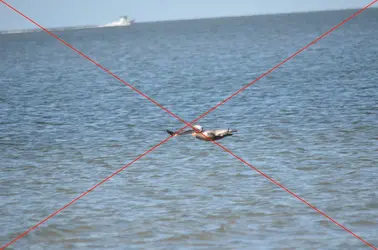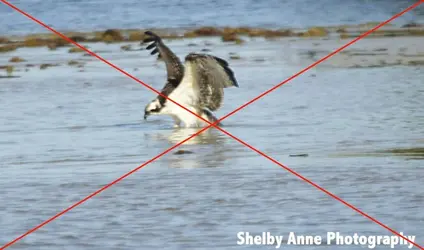You are using an out of date browser. It may not display this or other websites correctly.
You should upgrade or use an alternative browser.
You should upgrade or use an alternative browser.
NOT crisp!
- Thread Starter shelby16
- Start date
shelby16
No longer a newbie, moving up!
- Joined
- Mar 6, 2013
- Messages
- 415
- Reaction score
- 45
- Location
- USA
- Can others edit my Photos
- Photos OK to edit
- Thread Starter 🔹
- #17
Well, thank you guys!! It's just it happened with others too... look at this one! He wasn't even flying around! It's not AS bad as the pelican, but all the same! I'll post the EXIF data for this one too...

Model
NIKON D5100
Aperture
5.6
Exposure Time
1/1600 (0.000625 sec)
Lens ID
Unknown (AC 38 53 8E 34 3C AE 0E)
Lens Spec
55-300mm f/4.5-5.6 G VR
Focal Length
300.0 mm
Flash
No Flash
File Size
3.8 MB
File Type
JPEG
MIME Type
image/jpeg
Image Width
4928
Image Height
3264
Encoding Process
Baseline DCT, Huffman coding
Bits Per Sample
8
Color Components
3
X Resolution
300
Y Resolution
300
Software
Ver.1.00
YCbCr Sub Sampling
YCbCr4:2:2 (2 1)
YCbCr Positioning
Co-sited
Exposure Program
Aperture-priority AE
Date and Time (Original)
2013:05:28 20:37:00
Max Aperture Value
5.7
Metering Mode
Center-weighted average
Light Source
Unknown
Color Space
Uncalibrated
Sensing Method
One-chip color area
Custom Rendered
Normal
Exposure Mode
Auto
White Balance
Auto
Digital Zoom Ratio
1
Focal Length In 35 mm Format
450 mm
Scene Capture Type
Standard
Gain Control
Low gain up
Contrast
Normal
Saturation
Normal
Sharpness
Normal
Subject Distance Range
Unknown
Quality
Normal
F Number
5.6
Exposure Compensation
+2/3
Focus Mode
AF-S
Flash Mode
Did Not Fire
ISO Setting
800
ISO
800
Compression
JPEG (old-style)
Orientation
Horizontal (normal)

Model
NIKON D5100
Aperture
5.6
Exposure Time
1/1600 (0.000625 sec)
Lens ID
Unknown (AC 38 53 8E 34 3C AE 0E)
Lens Spec
55-300mm f/4.5-5.6 G VR
Focal Length
300.0 mm
Flash
No Flash
File Size
3.8 MB
File Type
JPEG
MIME Type
image/jpeg
Image Width
4928
Image Height
3264
Encoding Process
Baseline DCT, Huffman coding
Bits Per Sample
8
Color Components
3
X Resolution
300
Y Resolution
300
Software
Ver.1.00
YCbCr Sub Sampling
YCbCr4:2:2 (2 1)
YCbCr Positioning
Co-sited
Exposure Program
Aperture-priority AE
Date and Time (Original)
2013:05:28 20:37:00
Max Aperture Value
5.7
Metering Mode
Center-weighted average
Light Source
Unknown
Color Space
Uncalibrated
Sensing Method
One-chip color area
Custom Rendered
Normal
Exposure Mode
Auto
White Balance
Auto
Digital Zoom Ratio
1
Focal Length In 35 mm Format
450 mm
Scene Capture Type
Standard
Gain Control
Low gain up
Contrast
Normal
Saturation
Normal
Sharpness
Normal
Subject Distance Range
Unknown
Quality
Normal
F Number
5.6
Exposure Compensation
+2/3
Focus Mode
AF-S
Flash Mode
Did Not Fire
ISO Setting
800
ISO
800
Compression
JPEG (old-style)
Orientation
Horizontal (normal)
- Joined
- Oct 4, 2011
- Messages
- 10,726
- Reaction score
- 5,468
- Can others edit my Photos
- Photos OK to edit
- Moderator 🛠️
- #18
How MUCH are you cropping?
Gavjenks
TPF Noob!
- Joined
- May 9, 2013
- Messages
- 2,976
- Reaction score
- 588
- Location
- Iowa City, IA
- Can others edit my Photos
- Photos OK to edit
Again, stop shooting at exposure +2/3. You're already blowing out your highlights in the feathers, so you don't need it for this shot. That would give you more speed and a better exposure.
shelby16
No longer a newbie, moving up!
- Joined
- Mar 6, 2013
- Messages
- 415
- Reaction score
- 45
- Location
- USA
- Can others edit my Photos
- Photos OK to edit
- Thread Starter 🔹
- #21
I tried to pan, but I DID use VR. It was a gloomy sky where the pelican was.Why are you at exposure + 2/3? It looks plenty exposed, and I don't think you need that. This would give you back 2/3 of a stop more speed.
Was it really dark out when you took these? ISO 800, 1/1800th of a second and f/5.6 is 3 whole stops more light than the sunny 16 rule would suggest on a sunny day (and you're not shooting anything very white or black). Even when you add back your exposure compensation, that's 2.3 stops higher. If it was cloudy or something (I don't see any shadows on the water, but they may have been cropped), then try shooting on a nice bright sunny day, which might give you even more speed.
Add both of those together and you could easily be shooting at 1/4000th of a second instead of 1/800th, which may be enough to stop the blur.
Also, are you panning your camera to track the bird? it doesn't matter if you're shooting at 1/1000th of a second or more, panning your camera so that the subject stays in the middle of the viewfinder as you shoot will make it slow down relative to your shot and make it easier to get crisp images. Takes practice.
Finally, if your lens doesn't have VR, then that will make you more prone to blur. VR won't help much with horizontal movement of a subject, but it would help you to pan better in horizontal stabilization mdoe, which eliminates some of your vertical hand shake while panning.
edit: oh also I read in a couple places about people who mounted red dot rifle scopes on their hot shoes lines up with the center of their viewfinder, to allow them to get the bird in frame in less than a second once noticed. Gives you more time for focusing and more chances to shoot. I don't know if this really helps or not, but it was interesting.
shelby16
No longer a newbie, moving up!
- Joined
- Mar 6, 2013
- Messages
- 415
- Reaction score
- 45
- Location
- USA
- Can others edit my Photos
- Photos OK to edit
- Thread Starter 🔹
- #22
See, I don't know why the EXIF data says that because I only went up +7, so if that's the same... hahahaAgain, stop shooting at exposure +2/3. You're already blowing out your highlights in the feathers, so you don't need it for this shot. That would give you more speed and a better exposure.
cgipson1
TPF Noob!
- Joined
- Aug 18, 2011
- Messages
- 17,142
- Reaction score
- 4,350
- Can others edit my Photos
- Photos NOT OK to edit
- Joined
- Dec 16, 2003
- Messages
- 33,896
- Reaction score
- 1,853
- Location
- Edmonton
- Can others edit my Photos
- Photos NOT OK to edit
- Moderator 🛠️
- #24
Your shutter speed was fast enough, so that's good.
It might have missed focus. Single point focus might be hard to keep on a moving bird, try auto area mode in this situation.
Also, you definitely want AF-C focus mode, not AF-S.
AF-S will focus on the subject, then stop and lock the focus (until you take the photo). AF-C will continuously re-focus as you follow the subject.
It might have missed focus. Single point focus might be hard to keep on a moving bird, try auto area mode in this situation.
Also, you definitely want AF-C focus mode, not AF-S.
AF-S will focus on the subject, then stop and lock the focus (until you take the photo). AF-C will continuously re-focus as you follow the subject.
shelby16
No longer a newbie, moving up!
- Joined
- Mar 6, 2013
- Messages
- 415
- Reaction score
- 45
- Location
- USA
- Can others edit my Photos
- Photos OK to edit
- Thread Starter 🔹
- #25
WOW, thank you both so much!!  This is so helpful. Gonna change my settings right away.
This is so helpful. Gonna change my settings right away.
I'm gonna make a new thread in Nature/Wildlife of the amazing Heron I got photos of, and you guys can critique if you like.
Thanks again.
Shelby
I'm gonna make a new thread in Nature/Wildlife of the amazing Heron I got photos of, and you guys can critique if you like.
Thanks again.
Shelby
Gavjenks
TPF Noob!
- Joined
- May 9, 2013
- Messages
- 2,976
- Reaction score
- 588
- Location
- Iowa City, IA
- Can others edit my Photos
- Photos OK to edit
No + anything. Both of your pictures are slightly overexposed, so just stick with 0, exactly what your camera tells you, for shots like this. I suggest only putting in compensation if you have a good reason to expect the camera will fail. Like if you want a pure black silhouette at sunset, or if you're shooting a snowy field, or if you already took some photos and looked at the histograms and they were off.See, I don't know why the EXIF data says that because I only went up +7, so if that's the same... hahahaAgain, stop shooting at exposure +2/3. You're already blowing out your highlights in the feathers, so you don't need it for this shot. That would give you more speed and a better exposure.
Even if speed is not the reason why your shots are blurry (I don't know. It could be focus like they're suggesting above), it won't matter if it's overexposed, because your shot will still be ruined by having lost all of the detail in the white feathers.
curtyoungblood
No longer a newbie, moving up!
- Joined
- Oct 23, 2012
- Messages
- 393
- Reaction score
- 70
- Can others edit my Photos
- Photos NOT OK to edit
There isn't really anything in focus in your images, so I'm thinking there may be a technique flaw somewhere. Could you describe how you go about taking the photos when you're shooting? It looks to me like you're pushing the shutter halfway down, which focuses the camera on something, and then moving the camera, and then shooting the picture.
shelby16
No longer a newbie, moving up!
- Joined
- Mar 6, 2013
- Messages
- 415
- Reaction score
- 45
- Location
- USA
- Can others edit my Photos
- Photos OK to edit
- Thread Starter 🔹
- #30
I try to push the shutter button halfway down, and take the photo keeping it in the right spot, but sometimes I miss. hahaThere isn't really anything in focus in your images, so I'm thinking there may be a technique flaw somewhere. Could you describe how you go about taking the photos when you're shooting? It looks to me like you're pushing the shutter halfway down, which focuses the camera on something, and then moving the camera, and then shooting the picture.
I TRY to use tripods for things that are gonna stay in the same spot, but most of the birds are flying around.
Similar threads
- Replies
- 10
- Views
- 349








![[No title]](/data/xfmg/thumbnail/35/35670-0571a45fff5cc94fc333fb959ce54517.jpg?1734167303)






